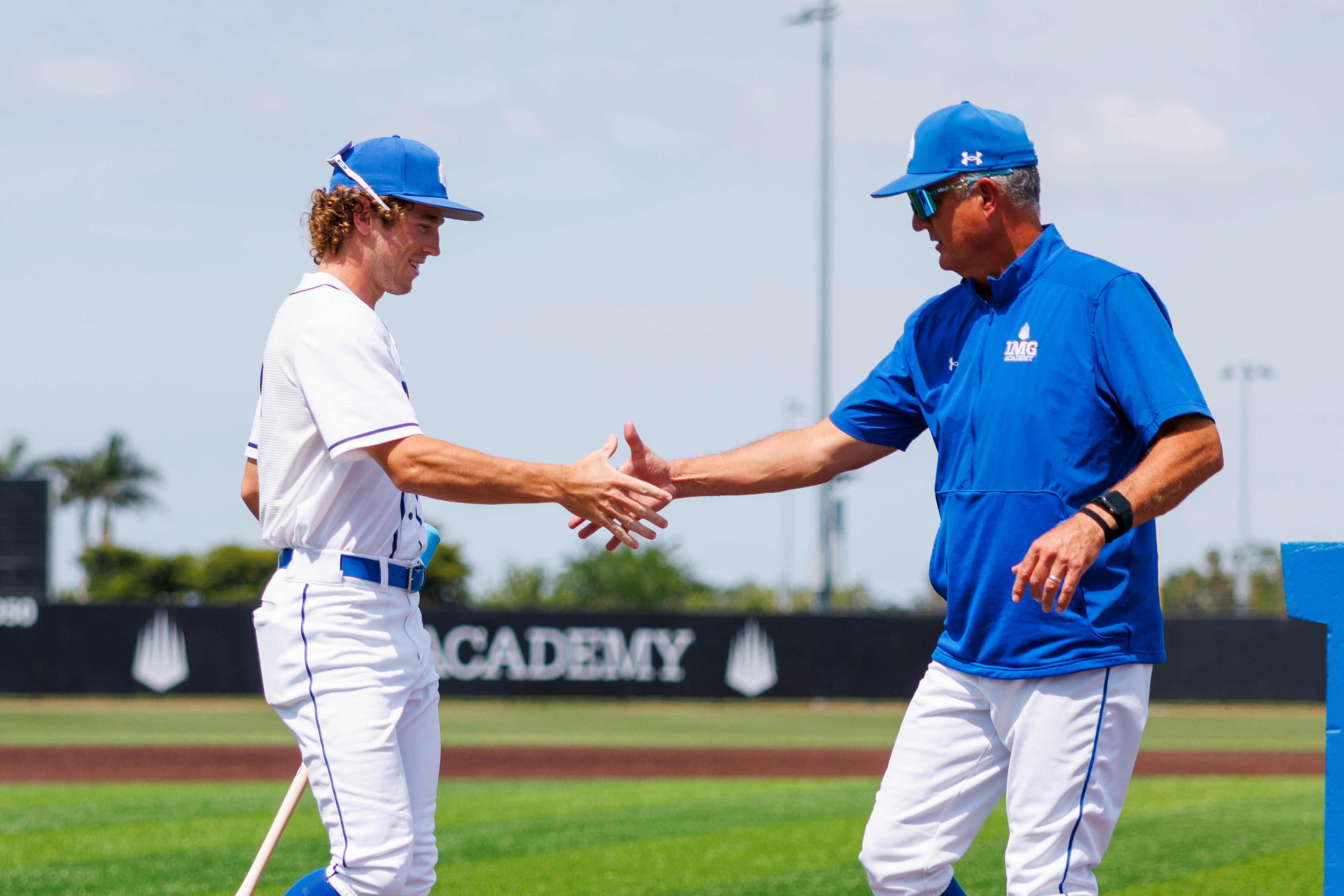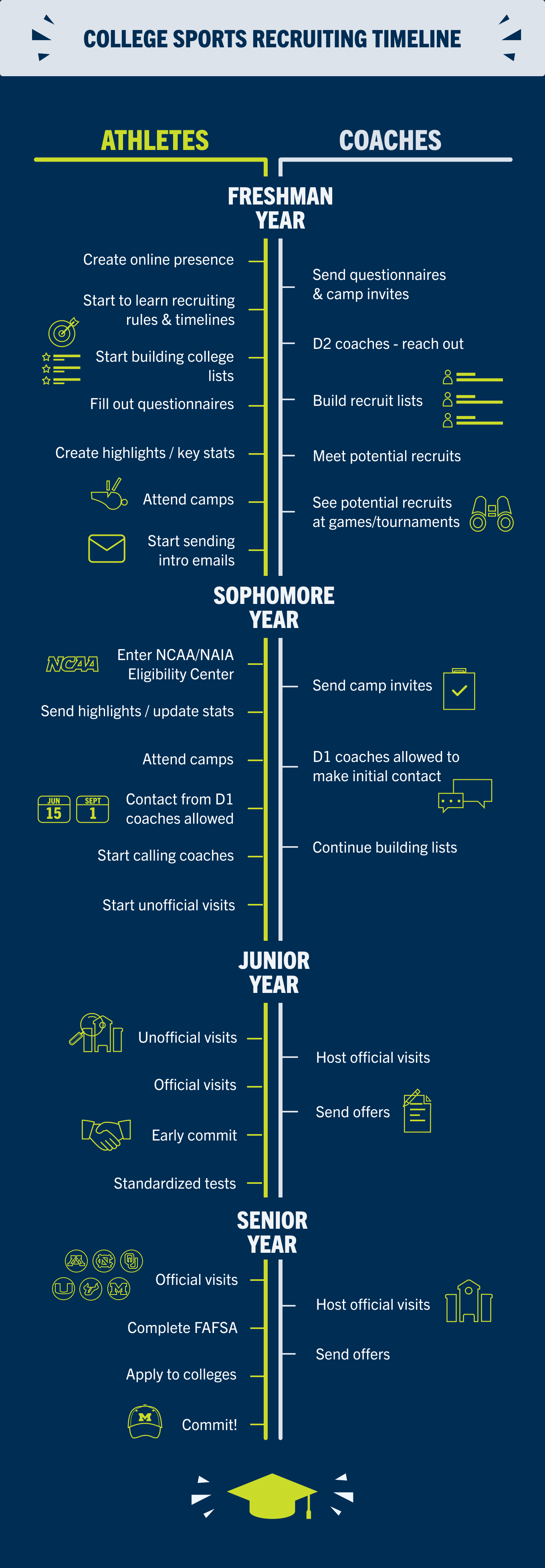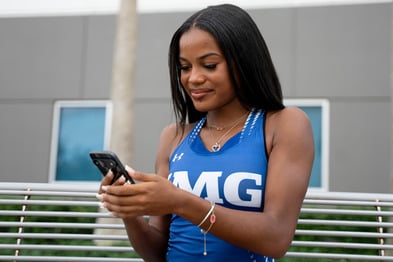Understanding the College Recruiting Process: How Do College Coaches Recruit Athletes?

In this guide to the college recruiting process, you’ll learn the step-by-step procedure college coaches use to find athletes and fill out their rosters, as well as what coaches are looking for in the athletes they sign. And you’ll discover simple actions you can take at each step to maximize your recruiting potential.
The 5 Steps of the College Recruiting Process
College sports and college recruiting are changing quickly and the competition for a roster spot is growing every day. But the basics of college recruiting are mostly unchanged. You'll learn the fundamentals for starting the college athletic recruiting process: How does the college recruiting process work for student-athletes and for coaches? How has it changed in recent years following the House v NCAA lawsuit? And what are the steps you need to take to stand out? And what role should your coaches and parents play in the process?
For coaches, the recruiting process begins long before they reach out to prospects. They start with a huge list of names—hundreds, or even thousands for bigger programs—and narrow them down to the athletes they sign to join their team. They also look at the transfer portal (more on that in a bit.)
Coaches whittle their huge list down to a final roster in roughly five steps:
Gather a list of prospective athletes and start the early evaluation process
Send out recruiting letters, questionnaires, and camp invites
Conduct more thorough evaluations of athletes
Offer verbal commitments and scholarships
Sign athletes
Below you’ll find the college recruiting process and timeline for coaches and athletes mapped out in parallel: You’ll see what coaches do in each of these steps, and learn actions you can take to improve your chances as coaches narrow their lists of athletes to a final roster.

College Recruitment Process Step 1: Coaches build a master list of prospective athletes
What coaches do: First, coaches create a large master list of potential recruits. They’ll look for athletes based on their height, weight, position, location, academic status, and more. The list comes from places recruits can’t influence themselves, recruiting sites like ESPN and Rivals. But, it's also built in a number of ways student-athletes can influence.
Student-athletes can get themselves on the list by:
Attending camps, combines and showcases (and making sure to reach out beforehand and after)
Building an online profile on NCSA and updating it frequently
Asking high school and club coaches to reach out
Answering questionnaires and reaching out to coaches through emails and other types of messaging
Connecting on social media
Performing well when a coach comes to see an upperclassman
Using all these tools, coaches in smaller programs can start with a list as long as 800 athletes. For larger programs and sports, the list can number 8,000.
What you can do: First, think like a coach and create a list of schools that you think could be a fit for you. Select ones that are in the right locations, have the right academic programs, work with your family’s finances, and feature the facilities, coaches, and the right social scene.
Next, start getting noticed so you’re on the big lists of coaches at those schools:
Create online profiles on third-party recruiting sites, including posting highlight videos
Send highlight videos to coaches
Build up your social media presence
Ask your coaches and other administrators to reach out to programs you’re interested in
Message or email coaches to tell them about yourself and your interest in their program
Attend camps and showcases where coaches from your list will be
Arrange informal visits, if possible, to the campuses on your long list
Pro Tip: A surprising way to stand out to coaches is to show self-awareness when your play isn’t perfect.
"Your ability to handle mistakes can really help you stand out. Coaches understand that no player is perfect. They look for athletes who are able to refocus quickly; think confident and collected, not cocky or easily rattled." Aubrey Sands, Senior Group Recruiting Coach | Volleyball
College Recruitment Process Step 2: Coaches send out recruiting letters, questionnaires, and camp invites
What coaches do: The timelines for when coaches can initiate contact with recruits varies by sport and division with D2, NAIA, and Junior College coaches having few restrictions when it comes to contacting recruits. Starting with underclassmen, coaches work from their long lists and start messaging recruits to gauge interest in their programs and begin evaluations. Once they’re permitted to do so, coaches send recruiting letters, make phone calls, and send camp invites and recruiting questionnaires.
Recruiting questionnaires seem generic, but they’re important. Sometimes they’re filled out online, and other times, they’re mailed. In both cases, coaches gather important information about athletes from these questionnaires, such as:
Your name, and your parents’ or guardians’ names
Your height and weight
The sports you play
Academic information, like your GPA and ACT or SAT scores
Your NCAA ID or Eligibility Center certification
Links to your recruiting profiles
Your stats, honors, and awards
Your social media accounts
Coaches use these questionnaires—as well as camp performance, and even which athletes respond to their letters and messages—to narrow their lists of potential athletes. Depending on the size of the program, this step may narrow their list of 800-8,000 athletes down to 500-3,000.
What you can do: Answer coaches’ messages and questionnaires with a prompt, personal response. Coaches talk to hundreds or thousands of athletes, so they know if you’re sending a canned, generic response.
How to stand out: Send an authentic, personal note thanking the coach for their interest, answering their questions, and asking if there’s anything you can do for the next steps in the recruiting process. Asking for the next steps shows you’re interested and you’ve got initiative. Avoid using AI tools like ChatGPT for composing a reply - it’s more obvious than you think when you do that and you want to showcase your personality.
If the coach sends a questionnaire, fill it out promptly. And if you’re invited to a camp at a school you’re interested in, and you can attend, do so. If you can’t make it or you’re no longer interested in a school, be sure to communicate politely with the coach - you never know who will end up where in the future (and it’s the right thing to do).
College Recruitment Process Step 3: Coaches conduct in-depth athletic, academic, and character evaluations of recruits
What coaches do: During this step, coaches work to really get to know recruits on their lists: They call athletes’ coaches for recommendations and evaluations, take a deeper dive on updated stats and highlight videos, talk to athletes on the phone and via messaging, and travel to see them perform. Coaches might attend tournaments or games to see how you play and meet or speak with you, or they might invite you to attend one of their camps. They will be looking for how you perform on the field and off of it.
They also might invite you for a visit. During this step, official and unofficial campus visits occur.
After this step, coaches have whittled down to lists of 20-300 athletes, depending on the sport and program size. They also are looking at the transfer portal, and seeing what experienced athletes they can add for an immediate impact to their roster. This can make the recruiting process even more competitive.
What you can do: Be proactive! If a coach has reached out to you, send him or her personal messages with updates about your academic and athletic progress. Gather and send updated highlight footage. Ask your coach to contact coaches you’re interested in being recruited by to offer their recommendation. Follow them on social media like TikTok, Instagram and X (formerly known as Twitter) and people in their program.
You can also use this step to evaluate the schools and coaches you’re interested in: Visit the campus on an unofficial visit if you can. When you do, reach out to the coach to see if they have time to meet with you. You can also do a virtual tour to get a feel for campus and show your interest to coaches.
Make sure as you’re considering how to improve athletically, you’re thinking about mental performance, leadership and confidence - you want coaches to see you as a leader who will be a good teammate. It’s also important for parents of student-athletes to know coaches are always watching them as well.
Talk to your parents, guardians, or coaches about what you think about the schools you’re interested in and being recruited by to help evaluate them.
College Recruitment Process Step 4: Coaches extend scholarship offers and make commitments with athletes
What coaches do: June 15 or September 1 is a big day for many college coaches. That’s when at the D1 level, they can start directly contacting recruits and making offers. For D1 and D2 colleges, not every recruit will commit to a coach’s program, so the coaches start with their top recruits, and work their way down the lists.
The offers that coaches make come in two types:
Verbal offers are non-binding, handshake agreements between athletes and coaches. Other sports, like NCAA D1 volleyball, are restricted in when they can extend verbal offers.Since they’re non-binding, verbal offers can be rescinded by the coach or program, or the athlete can back out. They can also change if a coach changes schools.
Official offers are made when an athlete receives and signs a financial aid agreement. This step typically happens when the athlete is a senior.
What you can do: Just as coaches rank their recruits, you should rank your choices. Talk with your family and coaches about the coaches and schools you’ve been evaluating and how they fit with your academic, athletic and social requirements in a school. Decide which ones you’d be interested in committing to if they make an offer. Have conversations with your family about scholarships and financial aid to help make your decision. Don’t feel pressured into saying yes to the first school that offers you - but be ready to act quickly.
"I encourage all my student athletes to visit campuses in person whenever possible. As cliche as it sounds, I believe student athletes will get that gut feeling when they found that perfect fit." Aubrey Sands, Senior Group Recruiting Coach | Volleyball
It’s also important that you understand new NIL (Name Image Likeness) and revenue sharing rules. Some athletes are now considering potential NIL opportunities when choosing schools, and coaches are starting to leverage NIL strategies as a recruitment tool, especially in higher-visibility sports.
Remember: You can also negotiate the amount of scholarship money you get. Make sure you understand how scholarships work long before coaches offer you one.
College Recruitment Process Step 5: Coaches sign their final roster
What coaches do: It seems like once they’ve made an offer, the recruiting process is finished. But it’s not quite over yet. Here’s the three-step process by which offers turn into final roster spots:
A verbal offer is made, and the athlete verbally commits to the school.
The college coach makes an official offer, and the athlete officially accepts by signing it.
The athlete continues to meet eligibility requirements, taking required courses and maintaining the required GPA in those courses. This step is crucial: Athletes who don’t remain eligible can lose their offer, and their roster spot can be offered to another recruit.
What you can do: If you’re being recruited by coaches and receiving offers, make sure to keep your eye on the academic ball, too, so you stay eligible. Talk with your guidance counselor to make sure you’re getting the grades required in the core courses that are needed to maintain your eligibility. Ask for help if you need it.
Conclusion
Coaches start with a huge list of potential athletes, then narrow down their recruits through calls and questionnaires, a rigorous evaluation process, visits, and calls. Ultimately, they make offers to their top recruits, and those who stay eligible become their final roster.
You should treat recruiting in the same way and follow the coaches’ steps:
Make a list of schools and coaches where you think you’d be a fit.
Reach out to those schools proactively, either on your own or with the help of your coaches.
Continue to evaluate the schools that are interested. Visit them, interact with the coaches, and think about which schools will be best for you. Understand the opportunities and changes that have come recently with NIL and revenue sharing for some sports. Make sure you’re doing everything you can on and off the field to be as competitive as a recruit as you can be.
Rank your schools so that if offers come, you’re ready to make the decision about which is right for you.Understand NIL and revenue-sharing and what and how to negotiate scholarship money.
Stay academically eligible so that your offer can turn into a final roster spot.
You can work on step 2, getting noticed, by making an NSCA recruiting profile. It’s the largest database of athlete recruits anywhere. It’s free, and lets you upload information about your sports, stats, and even include highlight videos for coaches to see.
Frequently Asked Questions
When does the recruiting process start?
From your perspective as an athlete, it’s never too soon to start: Researching the colleges and coaches you’d like to attend, maintaining your grades, and creating and updating recruiting profiles with videos are all ways to be proactive about the recruiting process before you’re able to speak directly with coaches.
When can coaches talk to athletes directly?
It depends on your sport and division. In certain sports, coaches can reach out to athletes starting June 15 after your sophomore year. In other sports, coaches must wait until September 1 of your junior year. Division 2 and NAIA coaches can reach out anytime. But you can reach out to coaches before these dates. You can send emails, videos, and transcripts before these dates, but the coaches can’t respond.
What’s the difference between a verbal offer and an official offer?
Verbal offers are non-binding offers from coaches for athletes to join their programs. In many sports, these offers can be made at almost any age, but they can also be rescinded. Athletes can also decide not to honor a verbal commitment. Official offers are usually made when an athlete is presented with financial aid forms. This usually occurs during your senior year.
Like this article? Access more in the full resource library on NCSA College Recruiting.
